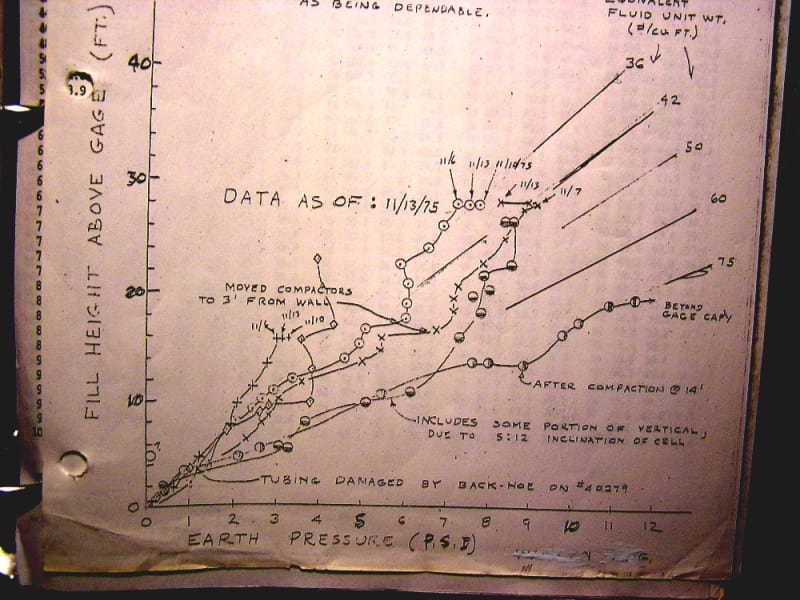Hi,
What is the recommended method to estimate the lateral pressure coefficient k0 for compacted soils (for a culvert design)?
I am aware of the k0=1-sin(ϕ)×OCRsin(ϕ) equation, but I'm not really sure how one would estimate the over consolidation ratio for a compacted soil. Is there a specified proctor compaction percentage to OCR relationship? Alternatively, are there any good rules of thumb (preferably with a reference).
So far, the best I've found is the commentary on AASHTO LRFD 3.11.5.2, which states that the lateral pressure coefficient for lightly overconsolidated sands is somewhere between 0.4-0.6 and, for heavily overconsolidated soils, the k0 may be around 1.0. No idea where a compacted soil would fit on that scale.
For the record, for my particular application a higher k0 is preferable, so I'm trying to identify what's the maximum k0 I can reliably obtain if the fill is compacted essentially against the wall.
What is the recommended method to estimate the lateral pressure coefficient k0 for compacted soils (for a culvert design)?
I am aware of the k0=1-sin(ϕ)×OCRsin(ϕ) equation, but I'm not really sure how one would estimate the over consolidation ratio for a compacted soil. Is there a specified proctor compaction percentage to OCR relationship? Alternatively, are there any good rules of thumb (preferably with a reference).
So far, the best I've found is the commentary on AASHTO LRFD 3.11.5.2, which states that the lateral pressure coefficient for lightly overconsolidated sands is somewhere between 0.4-0.6 and, for heavily overconsolidated soils, the k0 may be around 1.0. No idea where a compacted soil would fit on that scale.
For the record, for my particular application a higher k0 is preferable, so I'm trying to identify what's the maximum k0 I can reliably obtain if the fill is compacted essentially against the wall.

